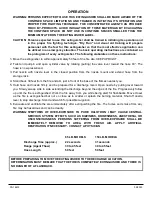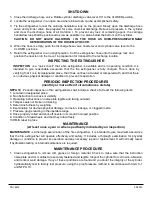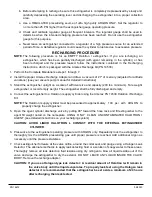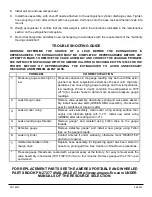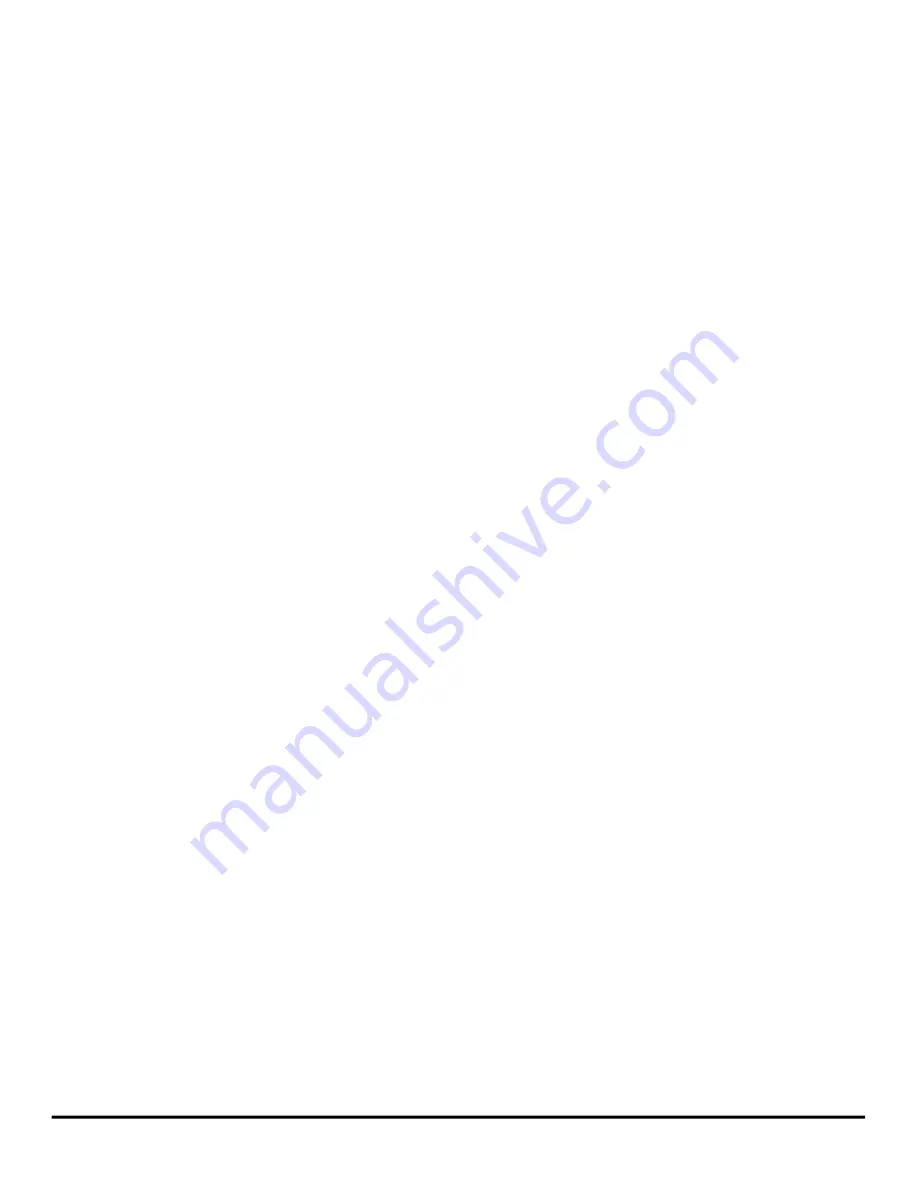
PN 16672
04/2020
NOTE
:
When cleaning avoid use of solvents around the pressure gauge. They could serious
damage the plastic gauge face.
2.
Inspect the extinguisher for damaged, missing or substitute parts. Only factory replacement parts are
approved for use on Amerex fire extinguishers.
3.
Weigh extinguisher and compare with weight printed in the Maintenance section on the nameplate.
Recharge extinguisher if weight is not within indicated allowable tolerances.
4.
Check the date of manufacture stamped into the cylinder. Cylinder must be hydrostatically tested in
accordance with DOT specifications 12 years (water jacket) or 7 years (proof pressure) to the pressure
indicated on the nameplate. Model 673, 65 lb. = 480 psi (3309 kPa); Models 674 and 675, 150 lb. = 1000
psi (6895 kPa).
5.
Visually inspect the pressure gauge:
a. if bent, damaged or improper gauge, depressurize and replace
b. if pressure is low or high and temperature/pressure relationship has been ruled out:
1. low pressure –
check for leaks
2. high pressure (over pressurized or over charged) depressurize and recharge extinguisher
following instructions listed below
6.
Remove and check pull pin for freedom of movement. Replace if bent or if removal appears difficult.
7.
Check the nozzle shutoff lever for freedom of movement (open and close several times). If the operation
is impeded, replace ball valve assembly. Make sure that the nozzle tip is clear and unobstructed.
WARNING: ALWAYS OPEN THE SHUTOFF NOZZLE HANDLE SLOWLY. BE PREPARED FOR A
POSSIBLE DISCHARGE AND NOZZLE RECOIL.
8.
After making sure that there is no residual pressure in the discharge hose, disconnect it from the cylinder
operating valve. Blow air through the hose and nozzle assembly to insure that the passage is clear of
foreign material. Check the couplings, hose and hose gasket for damage or deterioration –
replace as
necessary.
9.
Inspect valve assembly for corrosion or damage to hose thread connection. Valve removal and/or valve
part replacement shall be made only after following the depressurizing and recovery procedures listed in
the Complete Maintenance procedures.
10.
Inspect the wheels to insure they rotate freely. Lubricate as required
11.
Check carriage assembly for loose nuts, bolts, frame distortion or damage. Check welds for damage or
corrosion. Replace damaged parts or make repairs as necessary.
12.
Reconnect the hose to the agent cylinder. Properly coil the hose on the rack and install the nozzle (with
the lever in a closed position) on the mount.
NOTE
:
When assembling the hose to the agent cylinder or nozzle to the hose, tighten the coupling
¼ turn after contacting the hose gasket.
13.
Install new tamper seal and record service data on the extinguisher inspection tag.
14.
If the extinguisher has been moved to perform service, make sure that it is returned to its proper location.



